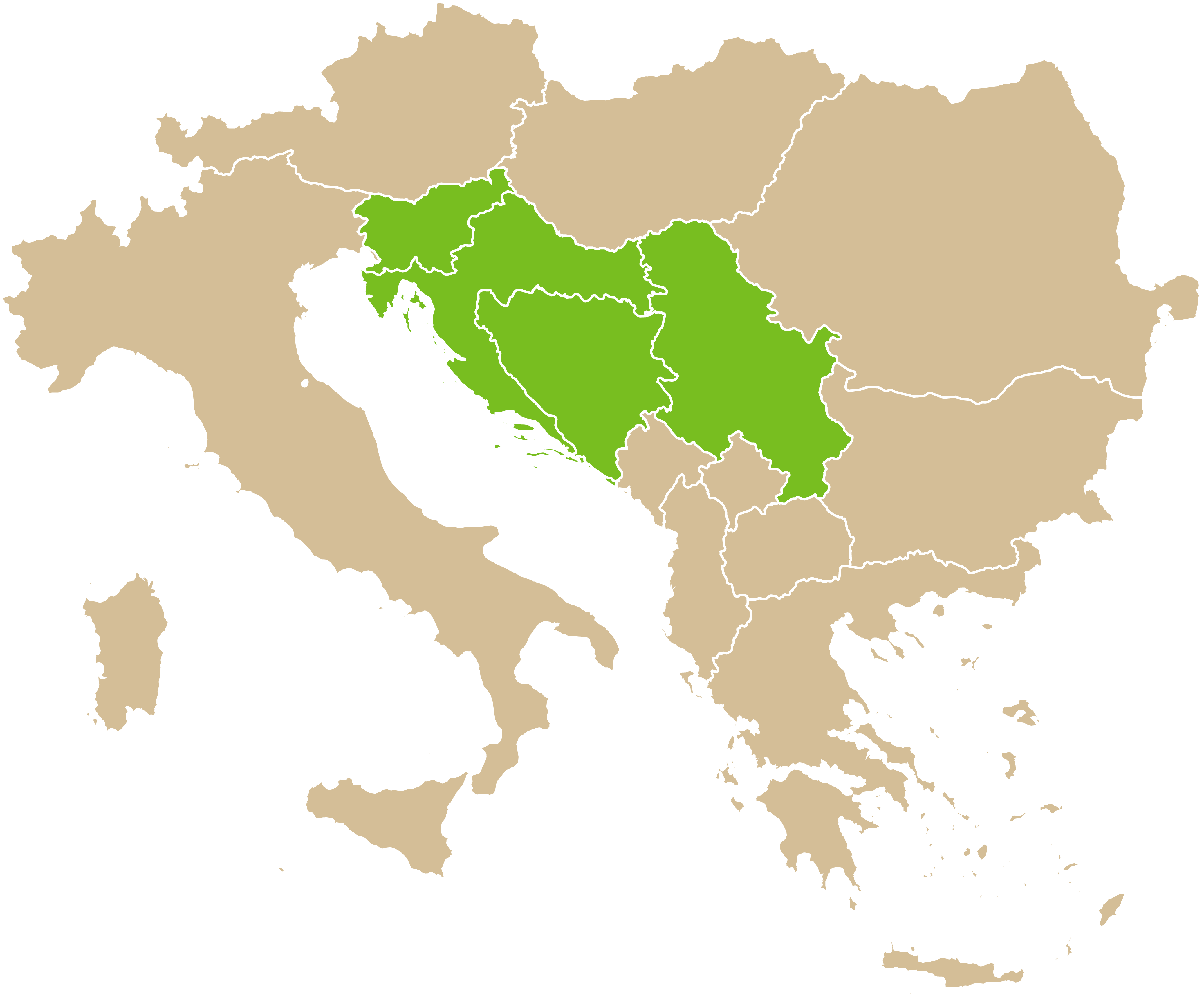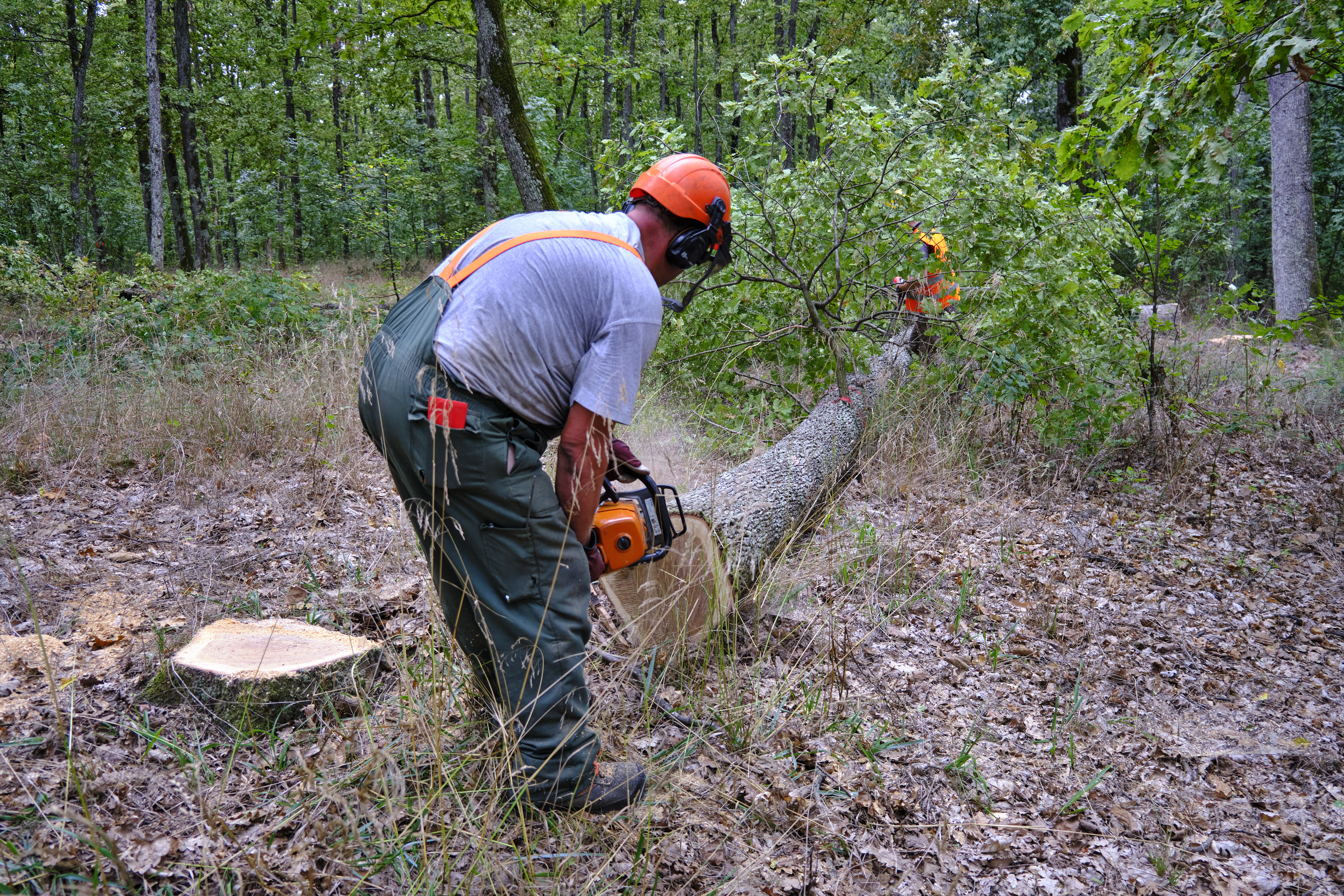Introduction
 FSC is one of the most influential forest certification schemes implemented in many Southeast European (SEE) countries. Most of the FSC certified areas in selected SEE countries (Bosnia and Herzegovina (BiH), Croatia, Serbia and Slovenia) are state-owned forests, managed by public forest companies. Public companies that manage state forests updated their forest management (FM) practice and operations to comply with the requirements of FSC standards. This is quite a demanding task as FSC FM certification is based on 10 Principles and over 50 criteria that need to be verified by external audit.
FSC is one of the most influential forest certification schemes implemented in many Southeast European (SEE) countries. Most of the FSC certified areas in selected SEE countries (Bosnia and Herzegovina (BiH), Croatia, Serbia and Slovenia) are state-owned forests, managed by public forest companies. Public companies that manage state forests updated their forest management (FM) practice and operations to comply with the requirements of FSC standards. This is quite a demanding task as FSC FM certification is based on 10 Principles and over 50 criteria that need to be verified by external audit.
Based on similar international studies that examine the impacts of FSC on forest management through the results of certification audits, this study attempted to quantify the impacts of FSC FM certification in 4 countries of the Adria-Balkan Region by analysing the corrective action requests issued during the audits (CARs) and by speaking to the local forest experts.
-
What is a corrective action request (CAR)?
During an annual forest management audit, an auditor/s controls if the certificate holder or the applicant for the certification manages the forest in compliance with the 10 FSC Principles. Where a non-conformity is discovered (an action or a process that does not comply with the FSC requirements), it must be transformed into corrective action request that at minimum includes:
- a description of the nonconformity
- the objective evidence on which the nonconformity is based, and
- a timeline within which the nonconformity shall be corrected by the client.
Corrective action requests (CAR) might be minor or major. A minor CAR shall be corrected within the maximum period of one (1) year (under exceptional and justified circumstances the timeline may be extended to two (2) years), while a major CAR shall be corrected within three (3) months (under exceptional and justified circumstances within six (6) months).
The certification body shall determine whether corrective action requests have been appropriately implemented within their timeframes. If the action taken is not considered adequate, then a minor nonconformity shall become major nonconformity and shall be corrected within a maximum period of three (3) months (or in exceptional and justified circumstances six (6) months), while a major nonconformity shall lead to immediate suspension of certification.
Therefore, a scientific analysis of CARs can provide an insight into the effects of FSC certificaiton on forest management in a given country.
-
What can CARs tell us about the impact of FSC on FM?
Several international studies provided a detailed analysis of the CARs found in audit reports, as CARs are an indicator for assessing changes in forest management practices. These studies showed that improvements in FM practice due to the FSC certification are likely to occur and that a wide variety of improvements exist between regions, mostly due to different FM regimes and ownership patterns.
For example, a study carried out in 2005 by World Wildlife Fund (WWF) showed that half of the CARs in the European countries analysed (Estonia, Germany, Latvia, Russia, Sweden and the UK) were raised to cover ecological issues, followed by social and economic issues, which were equally distributed - indicating that FSC had a stronger impact on ecological improvements of forest management practices.
Another study from 2006 compared the occurrence of FSC FM non-conformities between Eastern and Western Europe and discovered that compliance with legislation was more challenging in Eastern Europe.
Results of the study
-
Distribution of CARs per countries of the Adria-Balkan Region

Pezdevšek Malovrh et al., 2019 A total of 185 non-conformities in relation to the FSC standard requirements were identified for the period of 2014–2018 in public forest companies within selected SEE countries, of which the highest number was issued in BiH, followed by Serbia, Croatia and Slovenia.
Non-conformities correspond to the information recorded in 24 official audit Public Summary Reports, of which the highest number was issued in BiH, followed by Serbia, Croatia and Slovenia. This distribution is however affected by the number of analysed public forest companies per countries, which places Bosnia and Herzegovina (BiH) on the top as this country constitutes of 2 entities, one of which is made of 10 cantons - meaning there are in total 11 public forest companies in BiH, significantly more than in other observed countries.
-
Distribution of CARs per FSC Principles

Pezdevšek Malovrh et al., 2019 The highest shares of identified non-conformities in selected countries were found for Principle 4 (32.4%), concerning community relation and worker’s rights, followed by Principle 6, which dealt with the environmental impact (30.3%). Together, these two principles covered 62.7% of all identified non-conformities, confirming the results of previous similar studies.
NOTE: The FSC Principles have changed slightly since the time of this research, with no impact to the validity of these results.
-
Distribution of CARs per criteria of Principle 4

Pezdevšek Malovrh et al., 2019 In the case of Principle 4, most of the non-conformities (66.6%) referred to Criterion 4.2, indicating that FM should meet or exceed all applicable laws/regulations covering the health and safety of employees and their families. A deeper analysis indicates that the majority of the non-conformities refer to the availability of appropriate personal protective equipment (PPE) at the worksite, compliance with the International Labour Organization Code of Practice on Safety and Health in Forestry, as well as established emergency procedures and key responsibilities related to the identified risks.
In addition, frequent non-conformity has also been identified in relation to Criterion 4.4, dealing with lack of consultation with local people and interest groups, particularly with forest workers about working conditions and with contractors on the implications of the SFM procedures (21.7%). Concerning this criterion, there is also the issue of the need to incorporate the results of the evaluations of the social impacts in FM planning and operations. Some of the companies are missing an up-to-date list of stakeholders, as well as continuous cooperation with relevant stakeholders in terms of road construction or identification of special interest sites.
Legend
Criterion 4.1 The communities within, or adjacent to, the forest management area should be given opportunities for employment, training, and other services.
Criterion 4.2 Forest management should meet or exceed all applicable laws and/or regulations covering health and safety of employees and their families.
Criterion 4.3 The rights of the workers to organise and voluntarily negotiate with their employers shall be guaranteed as outlined in Conventions 87 and 98 of the International Labour Organisation (ILO).
Criterion 4.4 Management planning and operations shall incorporate the results of evaluations of social impact. Consultations shall be maintained with people and groups (both men and women) directly affected by management operations.
Criterion 4.5 Appropriate mechanisms shall be employed for resolving grievances and for providing fair compensation in the case of loss or damage affecting the legal or customary rights, property, resources or livelihoods of local peoples. Measures shall be taken to avoid such loss or damage.
-
Distribution of CARs per criteria of Principle 6

Pezdevšek Malovrh et al., 2019 The identified non-conformities related to Principle 6 are distributed among several criteria. The certification process obliged companies to be more aware of the environmental impacts of forestry operations that were often neglected. The identified non-conformities frequently relate to the absence of written guidelines for environmental impact assessment (criterion 6.5; 36.8%). However, the use of these guidelines is not appropriately integrated into the day-to-day planning process, while in most cases, the results of the assessments are mainly descriptive without any real evaluation of the impacts. Apart from this, non-conformities often refer to waste disposal (criterion 6.7; 22.8%), particularly inadequate on-site management and storage of fuel, as well as the use of chemical pesticides (criterion 6.6; 12.3%).
Legend
Criterion 6.1 Assessment of environmental impacts shall be completed - appropriate to the scale, intensity of forest management operations and the uniqueness of the affected resources - and adequately integrated into management systems. Assessments shall include landscape level considerations as well as the impacts of on-site processing facilities. Environmental impacts shall be assessed prior to commencement of site disturbing operations.
Criterion 6.2 Safeguards shall exist which protect rare, threatened and endangered species and their habitats (e.g. nesting and feeding areas). Conservation zones and protection areas shall be established, appropriate to the scale and intensity of forest management and the uniqueness of the affected resources. Inappropriate hunting, fishing, trapping and collecting shall be controlled.
Criterion 6.3 Ecological functions and values shall be maintained intact, enhanced, or restored, including:
-
Forest regeneration and succession.
-
Genetic, species and ecosystem diversity.
-
Natural cycles that affect the productivity of the forest ecosystem.
Criterion 6.4 Representative samples of existing ecosystems within the landscape shall be protected in their natural state and recorded on maps, appropriate to the scale and intensity of operations and the uniqueness of the affected resources.
Criterion 6.5 Written guidelines shall be prepared and implemented to: control erosion; minimise forest damage during harvesting, road construction, and all other mechanical disturbances; and protect water resources.
Criterion 6.6 Management systems shall promote the development and adoption of environmentally friendly non-chemical methods of pest management and strive to avoid the use of chemical pesticides. World Health Organisation Type 1A and 1B and chlorinated hydrocarbon pesticides; pesticides that are persistent, toxic or whose derivatives remain biologically active and accumulate in the food chain beyond their intended use; as well as any pesticides banned by international agreement, shall be prohibited. If chemicals are used, proper equipment and training shall be provided to minimise health and environmental risks.
Criterion 6.7 Chemicals, containers, liquid and solid non-organic wastes including fuel and oil shall be disposed in an environmentally appropriate manner at off-site locations.
Criterion 6.8 Use of biological control agents shall be documented, minimised, monitored and strictly controlled in accordance with national laws and internationally accepted scientific protocols. Use of genetically modified organisms shall be prohibited.
Criterion 6.9 The use of exotic species shall be carefully controlled and actively monitored to avoid adverse ecological impacts.
-
Conclusion

Based on the analysis non-conformities carried out in all the public forest companies in 4 selected countries of the Adria-Balkan Region, within the period 2014–2018, it can be concluded that FSC certification contributes to responsible forest management, covering mainly social and ecological issues. This was further confirmed through interviews with responsible professionals for forest certification, based on their opinion on the overall effects of FSC certification on the management practices of these companies.
The positive effects of FSC certification are most reflected in recognising and partially solving issues related to worker’s rights, health and safety issues, community relations, improving the image of forest companies, environmental impact assessment, nature protection and the maintenance of HCVs.
As all the public forest companies analysed were successful in the maintenance of FSC certificates, the real improvements occurred mostly in those performances connected with FSC Principles 4 (community relation and worker’s rights) and 6 (environmental impact). Significant differences between selected countries related to the number of non-conformities in all the FSC Principles were not identified.
Credits
This online article presents a published scientific study:
"Contribution of Forest Stewardship Council Certification to Sustainable Forest Management of State Forests in Selected Southeast European Countries", authored by Špela Pezdevšek Malovrh, Dženan Bećirović, Bruno Marić, Jelena Nedeljković, Stjepan Posavec, Nenad Petrović and Mersudin Avdibegović, and published in August 2019.
This study was not financed by FSC. To access the full study, please use the link below.

